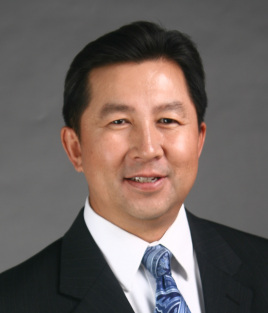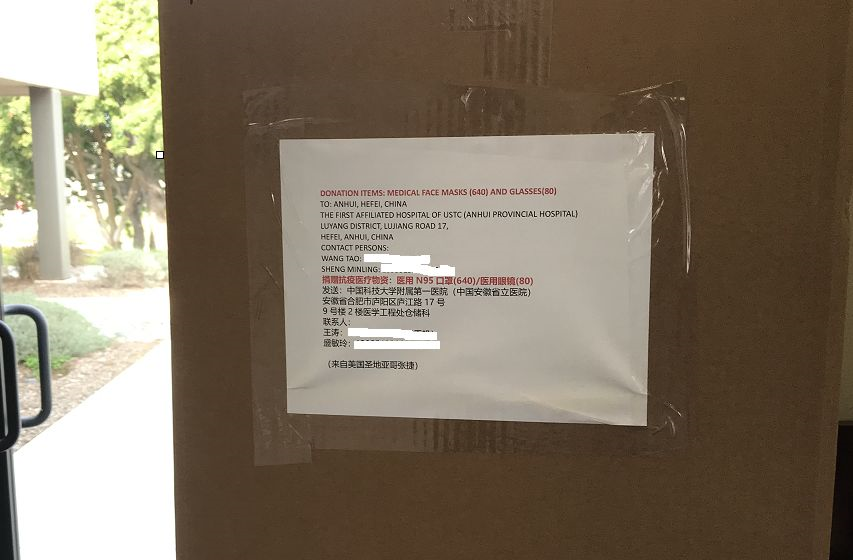3月11日,张捷接受了麻省理工学院(MIT)专访。在访谈中,张捷校友回顾了他以往的求学与工作经历,以及自己如何进入生物医学领域,并且分享了自己在教学与科研过程中的心得。现将访谈原文转录如下,以飨诸校友。
编者按:

张捷(817),1981年考入中国科学技术大学。在宾夕法尼亚州立大学获得地球物理学硕士学位,在麻省理工学院获得地球物理学博士学位。读书学习期间以及毕业之后,曾在美国政府科研部门和企业(Shell, USGS, Blackhawk Geometrics)从事地球物理成像科研与应用,并于1998年创建美国GeoTomo地球物理勘探公司。自2009年起,张捷教授先后在麻省理工学院和斯坦福大学从事勘探地球物理教学与科研。2011年1月携家人回国,在中国科学技术大学地球和空间科学学院工作,期间张捷校友组织开启了“SUM”(斯坦福-中国科大-麻省理工)交流项目,促进了三校学生之间交流联系。
2020年2月6日,美国国家工程院公布了2020年新当选院士名单,张捷(817)校友当选美国国家工程院院士。
在近期的新冠肺炎防疫过程中,张捷校友通过个人渠道,向中国科大教育基金会筹集捐赠多批紧缺医疗物资,用于母校及中国科大附属第一医院(安徽省立医院)防疫抗疫工作。


以下为访谈原文:
以下为访谈原文:
Q: How would you describe your current position?
A: I am a scientist, a professor, an entrepreneur, and an investor. I am based in San Diego, but often travel to San Francisco, Houston, and China, managing research in a university and six companies.
My research interests are to find new solutions for treating viral infection and cancer, to monitor and predict earthquakes, to find new ways for making early medical diagnosis and discovering energy resources. I am also very passionate about educating the younger generation for a better tomorrow.
Q: Growing up, were you interested in science? Why did you decide to pursue geosciences in school?
A: Like many people, my career destiny was not what I planned. I was in a professional art school from 7 to 14 years old. My high school teacher helped me to select Geophysics as a major in college admission, because he learned that a geophysicist is someone who runs to earthquake sites and delivers a quick report. I was a high school athlete at the time. It wasn’t a perfect fit at the beginning. I began to love it at the point when I felt the value, impact, and uniqueness of my research work.
Q: Before coming to MIT and after you completed degrees in geophysics, did you know what you wanted to study?
A: I clearly wanted to join the Earth Resources Lab (ERL), because I was interested in the applications of geophysics in industry.
Q: What was your time like at MIT? What did you do in ERL?
A: At ERL, Professor Nafi Toksöz created an environment that students had so much freedom to pursue any research, working with any faculty member or scientist. I was fortunate to work not only with Nafi, also with Ted Madden, Randy Mackie, Bill Rodi, Arthur Cheng, Roger Turpening, and Dale Morgan. In addition, I worked with Uri ten Brink at USGS and Shell Seismic Imaging Group while at MIT. These experiences were extremely valuable to my career, because I had early opportunities to work with people with various backgrounds and strengths, which is exactly what I am doing in multiple fields today.
Q: What was it like working with Nafi Toksöz, as your advisor?
A: Nafi is a legend of geophysics. He has explored geophysical problems at every scale and from every aspect, which influenced me so much. Today, I am comfortable working in multiple research fields, because of Nafi’s influence. Nafi did not necessarily get involved in every detail of what a student did, but instead, he guided the direction, determining the most cutting-edge research topics, finding the best resources and connections in the world to pursue the research. In every way, I am trying to mimic Nafi in my current role as an advisor to students.
Q: As a student, you surveyed sites in New England and Antarctica; what was that experience like?
A: Nafi and the Earth Resources Lab fully believed in data and experiments. Real challenges come from reality, not from imagination. I drove around New England conducting seismic surveys. Those surveys and the data processing issues motivated me to develop several new research topics, enabling me to present over 20 talks in various academic conferences as a student.
When Nafi told me about the opportunity to go to Antarctica, I told my family and friends that I was heading to North Pole, because I did not know the word “Antarctica” at the time! As the only scientist from US, I went to Antarctica for three months to conduct a 200 km seismic experiment, imaging the crustal structures and sleeping on the ice. Because of collaboration, I was also working with scientists from Italy, New Zealand, and Germany and they remain great friends today.
Q: What did your thesis “Nonlinear refraction and reflection traveltime tomography” examine? What big question were you trying to answer that led into you founding GeoTomo and entering the biomedical field?
A: The research topic was due to the need for technology to interpret my data. After returning from Antarctica, I found no sophisticated software available to do the imaging work that I needed to conduct. That situation motivated me to develop the refraction and reflection tomography in a fashion like medical CT imaging.
While in industry, I realized that startup is a unique experience in America that I should not miss, so I decided to found GeoTomo, a geophysical software and service company conducting near surface imaging for oil and gas exploration. We tried to fill in the missing niche in the E&P market at the time.
A few years later, I implemented 3D refraction traveltime tomography in the industry following the same idea, which has been used for oil and gas exploration in over 60 countries. Because of the development and the impact of the research, SEG awarded me the Reginald Fessenden Award in 2012.
Q: What skills did you gain that have helped you the most in your career?
A: MIT certainly taught me many skills, but the most important thing that MIT taught me is a creative thinking mindset, which has helped me the most.
Q: What was it like to found and teach at the Geophysical Research Institute at the University of Science and Technology in China?(在中国科学技术大学地球物理研究所的创新和教学工作让您感觉如何?)
A: I returned to China and joined USTC after teaching my course 12.571 at MIT in 2009. My intention was to help build an education program pursuing excellence, just like MIT and Stanford. The Geophysical Research Institute has grown very fast, and 15 new faculty members and over 100 graduate students have joined the program. In particular, we initiated Stanford-USTC-MIT programs and invited students from Stanford and MIT to visit USTC every summer and we promote academic exchange and friendship among graduate students.( 2009年,在完成麻省理工学院的教学工作之后,我回到中国,加入了中国科学技术大学。我是想帮助(中国科大)建立一个追求卓越的教育项目,就像麻省理工学院和斯坦福大学一般。地球物理研究所发展得很快,15名新成员和超过100位研究生参加了这个卓越项目。为了增进研究生之间的学术交流和友谊,我们特地启动了斯坦福-中国科大-麻省理工(SUM)项目,每年夏天邀请斯坦福和麻省理工的学生访问中国科大。)
Q: What values and skills do you try to confer to your students and fellow researchers? How do you do this?
A: I have been trying to follow Nafi’s approach and give students and researchers enough time and space to pursue any creative idea. Following Nafi, I also insist on high standards: whatever we do must be the best. There is no cheap way to reach success. To implement that, I tried to offer students every learning and working opportunity that I can. I brought a lot of scholars from US to visit our group and do internships, and have sent students to US universities as short-term visitors, and encouraged them to attend major conferences worldwide. Over the last 9 years, we have published 136 papers on new technologies and new discoveries.
Q: Besides being elected to the National Academy of Engineering (congrats!), what accomplishments are you particularly proud of?
A: At the age of 50, I was thinking of what else I must do before it is too late. I decided to learn biotech and artificial intelligence, as well as running marathons. Today I am leading a biotech company as CEO, releasing a nanoparticle formulation that shows 100% survival rate in animal cancer studies. I am also leading the EarthX development, the first AI earthquake monitoring system launched in the world. All of these experiences are truly exciting to me. I have also completed two full marathons and twenty-five half marathons within last five years!
Election to the National Academy of Engineering is a pleasant surprise. I am very humbled to join NAE after Enders Robinson, Jon Claerbout, Amos Nur, and Mark Zoback, who are the pioneers and giants in geophysics. Ranked No. 1 Most Creative People in China by Fast Company was another surprise. There are so many excellent and talented people out there who also deserve the recognition.
Q: Your career has now branched into biotech research and you are co-founder and CEO of Cello Therapeutics as well as a full-time professor at USTC. How do you balance all of these roles?
A: There are certainly many overlapping scientific disciplines and approaches of thinking across multiple fields. In geophysics, we develop new ideas and engineering products with a huge gap in between, while in biotech, we do the same and face the same challenges. But each field certainly requires intense study of the detailed knowledge. It took me five years of effort to be able to sit with biotech professionals and discuss research on a daily basis.
I have to deal with multiple tasks in business and volunteer work every day. Everyone has a different approach. My strategies include making timely plans, setting top priorities, and making efforts to avoid multitasking if possible.
Q: In the past, you’ve been on the EAPS Visiting Committee and helped launch and support various EAPS graduate fellowships (in honor of Nafi Toksöz, Ted Madden, Sven Treitel). Why do you think it is important to support MIT research and young scientists?
A: MIT education was extremely valuable to me, and I want to ensure that the new generation will benefit tremendously as well.
Q: What message do you have for young scientists? What do you wish you knew when you were younger?
A: Identify great research topics by dealing with real problems, understand the value of your research through actively exchanging with other scientists in the field, and produce high impact results by collaborating with scientists in other fields.
Thank you for your support and sharing your insights!
访谈来源:https://eapsweb.mit.edu/news/2020/alumni-spotlight-jie-zhang?from=singlemessage